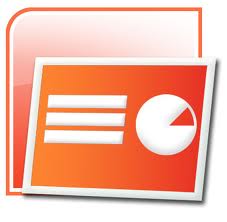Chemical Reactions
Having completed the prior units on atomic structure, the naming of elements and compounds, bonding, and moles, the students are now ready to start looking at how atoms and molecules can rearrange themselves during chemical reactions. The focus of this chapter is primarily on the basic mechanics of writing out and predicting the results of chemical reactions. Starting with the relatively simple synthesis and decomposition reactions, we work our way up through single replacement, double displacement, and combustion.
Students will need to copy of a periodic table and polyatomic ions reference list to be able to complete these worksheets.
Chemical Reactions Powerpoint Lecture
 |
Purpose: This Powerpoint lecture takes students through each of the different reaction types: synthesis, decomposition, combustion, single replacement, and double displacement reactions. Practice problems with equation balancing are given for each.
Essential Concepts: Chemical reaction, product, reactant, subscript, coefficient, synthesis, decomposition, combustion, single replacement, and double displacement reactions.
Chemical Reactions Notes Outline
Purpose: This is a fill-in-the-blank style notes outline for students to complete as you complete the accompanying Powerpoint lecture. Each slide has a set of questions, fill-in-the-blanks, or tables that students fill in based on the information given. This is a good aid for students who struggle with taking notes freehand.
Essential Concepts: Chemical reaction, product, reactant, subscript, coefficient, synthesis, decomposition, combustion, single replacement, and double displacement reactions.
Writing and Balancing Synthesis Reactions
Purpose: Predicting the products and balancing chemical reactions is the main skillset that students need to have leaving this chapter. I start teaching this with synthesis reactions, because they are one of the simplest and most straightforward forms of chemical reactions. This worksheet provides a few examples of how to predict products of synthesis reactions using oxidation states as well as showing students how to balance.
Essential Concepts: Chemical reactions, synthesis reactions, balancing equations, predicting products, oxidation state.
Writing and Balancing Decomposition Reactions
Purpose: This worksheet is a good followup to the synthesis reactions worksheet, because all of the same rules and ideas apply, simply in reverse. I keep the problems in this assignment simple by either focusing on simple binary ionic compounds or giving students the names of the products in advance.
Essential Concepts: Chemical reactions, decomposition reactions, balancing equations, predicting products, oxidation state.
Writing and Balancing Single Replacement Reactions
Purpose: Single-replacement reactions involve reacting a lone element (usually a metal) with a compound, resulting in the cations switching places. Students will learn to use the activity series for the first time as part of this worksheet, as they identify when reactions will and will not occur. Students will need to copy of an activity series chart to be able to complete this assignment
Essential concepts: Chemical reactions, single replacement reactions, balancing equations, predicting products, oxidation state.
Writing and Balancing Double-Displacement Reactions
Purpose: Double-displacement reactions involve the switching of cations between two compounds. The prediction and balancing of these reactions isn't too much of a challenge for students at this stage, however, they now must consider whether or not each product will remain as part of the aqueous solution or will form a precipitate. A simplified solubility table is included as part of this assignment.
Essential Concepts: Chemical reactions, double-displacement reactions, balancing equations, predicting products, oxidation state, precipitate, solubility, aqueous solution.
Writing and Balancing Combustion Reactions
Purpose: Combustion reactions are the last type of chemical reaction covered, and for many students, one of the most difficult to balance. The products are always the same -- carbon dioxide and water vapor, but the coefficients for balancing these equations often become double-digits.
Essential Concepts: Chemical reactions, combustion reactions, balancing equations, predicting products.
Mythbusters - Alkali Metal Mayhem Worksheet
Purpose: In this episode of Mythbusters, they debunk a Braniac video (viewable on Youtube) that demonstrates an explosion produced by dropping cesium into a bathtub of water that is powerful enough to actually crack the bathtub. As they perform the experiment, the Mythbusters illustrate two types of chemical reactions. First, dropping an alkali metal in water results in a single-replacement reaction, releasing hydrogen gas. The hydrogen gas then reacts with oxygen in a synthesis reaction, forming water and releasing a lot of energy in the form of heat and light. This is also a good video to introduce the idea of the periodic law -- the alkali metals will react more violently with water as you move further down the group.
Essential Concepts: Chemical reactions, single-replacement reactions, synthesis reactions, alkali metals, periodic law.
Mythbusters - Cell Phone Destruction Worksheet
Purpose: This segment of Mythbusters focuses on combustion. Specificially, is using a cell phone enough to initiate the combustion of gasoline, resulting in a fire or explosion at a gas station? The answer is no, as there is a level of activation energy needed to initate combustion that simply is not present in the electromagnetic emissions of a cell phone. The Mythbusters do learn that the most common cause of gas station fires is static electricity discharge from people exiting their car.
Essential Concepts: Chemical reactions, combustion, activation energy.
Writing and Balancing Chemical Reactions Study Guide
Purpose: Once the instruction for the unit is completed, students can complete this study guide to aid in their preparation for a written test. The study guide is divided into two sections: vocabulary and short answer questions. The vocabulary words can be found scattered throughout the different instructional worksheets from this unit. The short answer questions are conceptual and meant to see if the students are able to apply what they've learned in the unit.
